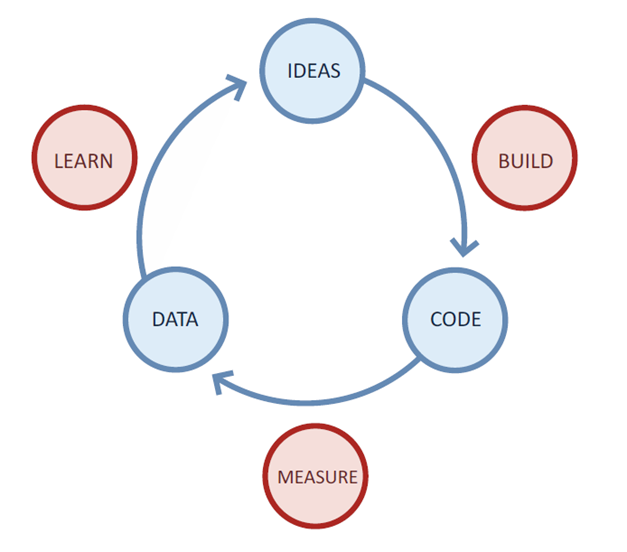The Lean Startup Methodology (LSM) is one of the most popular ways for startups to create products nowadays. Its iterative learning model lays out a logical way to progress how a product gets built.
In order to succeed using the LSM, it’s important that everyone in your company is on the same page.
One way to learn the LSM is to read books and blogs by experts on the topic. But that takes time. If you had to get to the essence of the LSM fast, without it seeming like some new complex thing, you would need a different approach.
This framework consists of 2 elements:
1. Understanding the core of what the LSM is about, and
2. Using this understanding to reframe the Build-Measure-Learn cycle in much simpler terms
1. The core of the LSM:
The LSM is about measurable outcomes. Only if outcomes are measurable, can you act on them in some logical way. Understanding this concept is key towards being able to implement (and internalize) this methodology.
Here’s an example to ensure we’re on the same page: “Increasing sales” is not measurable. “Increasing sales by 20%” is.
This may seem obvious to many. But in my experience, not everyone is geared towards operating in an outcome-based manner (at least not by default).
2. Reframing the LSM cycle:
When you look at the LSM cycle, it’s laid out sequentially in terms of Build-Measure-Learn. The central idea is to get through this loop as quickly as possible to validate a hypothesis (or vice versa).
There are multiple things you can do, or consider, at each stage of this loop to help you get through it quicker.
But rather than talk about this cycle as it’s commonly understood, I think it’s easier to understand it in reverse.
In other words, rather than describing it in terms of Build-Measure-Learn, talk about it as Learn-Measure-Build. The reason for this is that learning can only happen from measurable outcomes. Starting with outcomes also makes it easier to understand how you got there and what to do about it.
To crystallize this idea, we can co-opt Simon Sinek’s “Start With Why” idea to reframe the reverse LSM loop.
Sidebar: If you’ve never seen his TED Talk, stop everything you’re doing and watch it now.
As in Sinek’s talk, the simplest representation of his idea is this bull’s-eye diagram.
If you superimpose Sinek’s idea on to the steps of the LSM loop, these simple questions map wonderfully like this:
- “Why”: “Why is the result of this test significant (or not)?
This is nothing but “Learn.” - “How”: “How do we know that we got this result?”
This is “Measure.” - “What”: “What’s that (minimum) thing we did that led to this result?”
This, of course, is “Build.”
This Sinek-LSM cycle mashup then looks like this…
If you flip this mashup by looking at the classic LSM Loop you get this…
I think looking at the LSM cycle in reverse, in the context of simple Why, How and What-based questions frees you from having to understand the LSM as a new concept. And because you start with the outcome (or Why), it makes it much easier to understand what Build-Measure-Learn (or rather Learn-Measure-Build) really means.
I believe this provides the missing first step in providing a foundation for someone to learn how to get through the LSM loop quicker. It begins to pave an easy path to think about what the most efficient, lean and minimum way to arrive at a measurable outcome might be.
Of course, you now have an easy way to measure if someone has truly understood the LSM or not as well. Just start with why.
Get more great information on building startups delivered to your inbox.





